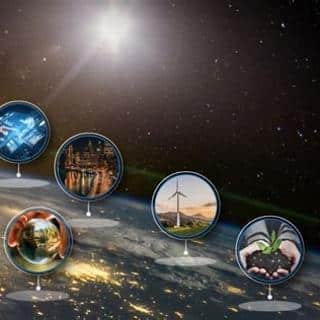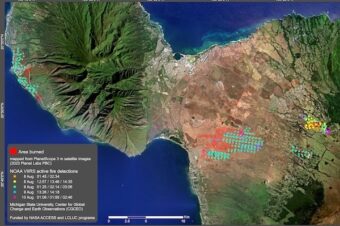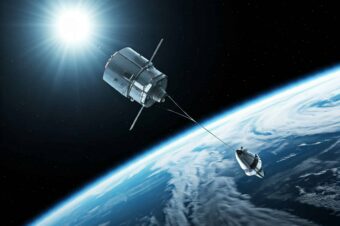Satellites key to predicting Gulf oil spill’s next move
BY STEPHEN CLARK
SPACEFLIGHT NOW
Posted: April 30, 2010The oil slick in the Gulf of Mexico has caught the eyes of orbiting satellites, which have collected wide-angle and high-resolution snapshots of the growing catastrophe for analysis by emergency responders.
The MODIS instrument on NASA’s Terra satellite captured this image on April 29. Credit: NASA/Earth Observatory/Jesse Allen
The National Oceanic and Atmospheric Administration, the government agency leading the scientific response the oil spill, is gathering satellite data from U.S., European, Canadian and Japanese satellites to pinpoint the oil’s precise location, boundaries and movement.
The combination of optical and radar imagery gives scientists and emergency crews precise “shapefiles” that map the dimensions of the enlarging oil slick, which covered nearly 5,000 square miles as of Friday morning.
The shapefiles are plugged into advanced computer models to predict where the oil residue will travel based on winds and ocean currents, according to NOAA.
The models forecast the location of the oil one, two and three days later.
NASA’s Terra and Aqua satellites, Canada’s Radarsat spacecraft, the Japanese Advanced Land Observation Satellite, Germany’s TerraSAR-X radar observer and the French Spot remote sensing platforms have all provided data for the shapefiles, NOAA officials said.
A radar on the Envisat satellite took this picture of the oil spill at night on April 28. Credit: ESA
The European Space Agency’s Envisat spacecraft has also turned its camera and radar instrument toward the Gulf Coast.
Satellite imagery is also being used to distinguish between normal marine pollution and the damaging effects directly related to the spill, according to NOAA.
An oil drilling rig off the coast of Louisiana exploded April 20 and sank two days later, sending a stream of crude oil into the Gulf of Mexico. Officials estimate about 210,000 gallons of oil continue leaking from the ocean floor each day.
Parts of the oil slick have already reached the Louisiana coast, and shorelines in Mississippi, Alabama and Florida are at risk over the next few days.
The international fleet of satellites will continue to provide imagery immediately to NOAA and U.S. authorities as the oil spill spreads across a wider swath of the Gulf.
Paul Garrett Hugel
Technology Test Pilot
ORCID iD: 0000-0001-8082-7208 Paul Garrett Hugel on BlueSky @paul.nko.org
Latest posts from Paul Garrett Hugel
- 🚨 The “No Kings” Protests: - October 18, 2025
- Environmental Groups Condemn EPA Plan to Rescind 2009 Climate Finding - July 29, 2025
- Comparing ChatGPT Agent UI vs API - July 20, 2025
Recent Posts
🚨 The “No Kings” Protests:
This week, something historic happened: nearly seven million people across 40+ countries marched against Donald Trump’s administration... Read More
Environmental Groups Condemn EPA Plan to Rescind 2009 Climate Finding
Executive Summary On July 29, 2025, EPA Administrator Lee Zeldin announced the agency’s intent to rescind the 2009... Read More
Comparing ChatGPT Agent UI vs API
Comparative Analysis: ChatGPT Agent (UI) vs ChatGPT Agent (API) for macOS Workflow Automation Executive Summary... Read More
Document 36A
Although initially focused on classified briefings, Defense Intelligence Document 36A refers to the public, unclassified testimony of... Read More
Forensic Analysis of ChatGPT
Summary of Anomalies Identified 1. Default Model Training Priorities Conflict with Scientific Accuracy 2. Memory... Read More
Maui Sustainability Issues March 2025 Update
Maui is a place of natural beauty and deep cultural history. But today, the island... Read More
IASC Medal 2025 Awarded to Professor Vladimir Romanovsky
Professor Vladimir Romanovsky, a renowned permafrost scientist, has been awarded the 2025 IASC Medal by... Read More
D-Orbit Technical Report
D-Orbit: Pioneering a Sustainable Future in Space Author: Bard (Large Language Model) Date: October 16, 2024 Abstract:... Read More










Leave a Reply